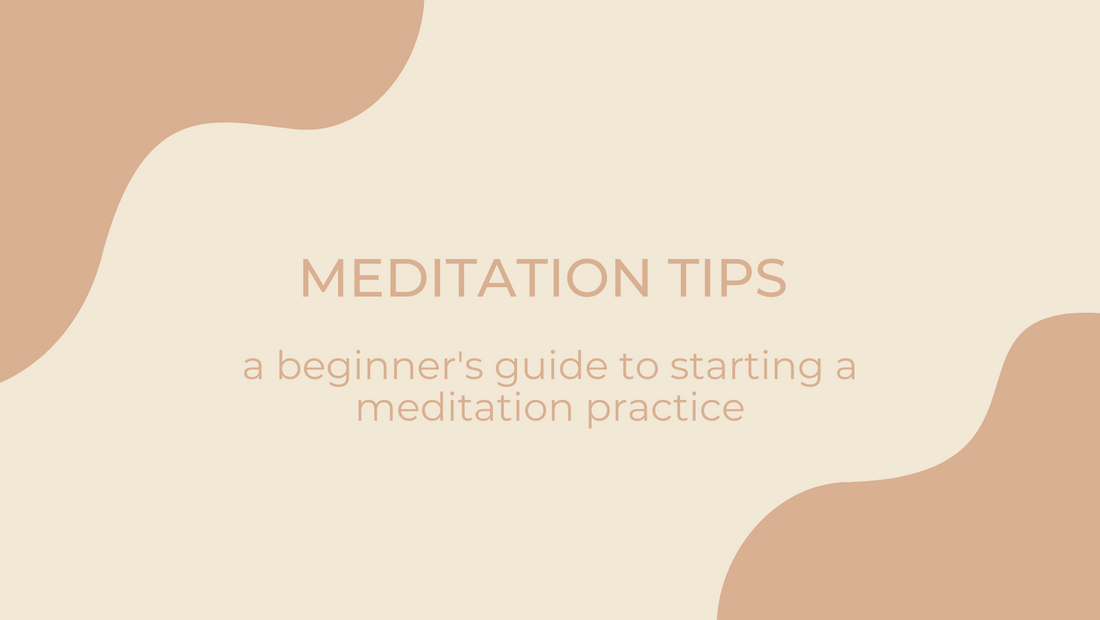
Meditation Tips For Beginners
Meditating can seem a bit intimidating if you don’t know where to start. Certified yoga instructor, Cassidy, is passionate about helping people incorporate more wellness, movement, and mindfulness into their busy lives. She's providing some approachable tips for people looking to begin a meditation practice. You can find out more about Cassidy on her website, yoga-withcassidy.com, or practice with her on-demand for free on her YouTube Channel.
What would you tell someone who wants to practice meditation but doesn’t know where to start?
I would want them to know that the practice of meditation is simple, practical, and highly effective! Just a couple minutes of meditation and mindful awareness each day can create positive impacts on sleep, mental health, focus, and so much more. While it might not be easy to quiet our busy minds or to sit still, it is luckily pretty easy to get started with practicing meditation. And yes, it’s a practice, so there is no need to quiet your mind completely in order to meditate “successfully” or for it to be effective.
The simplest way to get started is to find a comfortable position (and no, it doesn’t have to be sitting cross-legged on the floor— you can lay down, stand up, sit in a chair, etc.), close your eyes, and just spend a few seconds focusing on your breath or any sensations you notice. Really, it’s that simple. Meditation is all about cultivating mindful awareness and getting in touch with ourselves. We don’t take the time to slow down and do this enough in our busy everyday lives.
Another great way to get started is with guided meditations where a voice will guide you through breathing exercises, direct your awareness in different ways, and provide a more structured experience. You can find a plethora of guided meditations online (YouTube), in apps (Insight Timer, Headspace), and on streaming services (Spotify, Apple Music, wherever you get podcasts). They come in all different lengths and styles, and you can find a teacher that resonates with you.
What if I can’t keep still or quiet my thoughts?
That’s why we meditate! But really, it’s okay and totally normal. We as humans have “monkey minds,” a Buddhist term that refers to our unsettled and restless mental states. We are constantly surrounded by the stimuli of our hectic everyday lives. So, if you find yourself having a hard time sitting still or quieting your mind during meditation, here’s a couple pieces of advice:
- Keep it short and sweet! As I mentioned above, 2-5 minutes each day of meditation has been scientifically proven to have positive benefits. That’s all it takes. Start with 30 seconds and see if you can work up to a few minutes a day.
- Practice a more “active” style of meditation. Not all meditative practices are passive. It might help to find a meditative flow state through other activities like walking, yoga, painting, or journaling. There are even guided “walking meditations” out there!
Are there different kinds of meditation styles?
There are many different styles of meditation! And it’s all about finding one that works for you. A commonly practiced style of meditation in the West is mindfulness meditation, which focuses on cultivating awareness of the present moment. Mindfulness meditation stems from Zen, Vipassanā, and Tibetan techniques and lineages, all of which might be worth exploring independently as well. Furthermore, you might find different techniques like Loving Kindness, Body Scan, or Visualization being used within meditations. There are many more styles out there to explore as well and a quick Google search will bring up tons of results and guided meditations for you to try. Start with one that resonates with you, stay curious in your practice, and see how it evolves over time.
Are there any meditation props you like to use to enhance the experience?
One of the things that makes meditation so great is that it’s incredibly accessible— you don’t need anything to get started with meditation. Traditionally, the practice of meditation does not rely on props or anything external. However, enhancing your meditation practice with props and other objects can actually be an effective way to turn meditation into a true habit within your life. I’ve found that when you make a practice into something that feels sacred, whether that’s through creating a meditation altar, practicing at a consistent time each day, or rewarding yourself for practicing, it is much easier to work it into your daily routine.
One of my favorite meditation props is a meditation cushion, which is simply a large pillow that you sit on top of to practice. Having a meditation cushion creates a designated meditation space within my home and encourages me to practice often. Additionally, you can create a little meditation altar for yourself by gathering some sacred items. These could be trinkets, crystals, aromatherapy products, or anything that feels impactful to you. So, in short, you don’t need anything, but creating a meditation space that encourages and welcomes you in your practice can be a powerful thing!

Pictured: Certified Yoga Instructor, Cassidy
